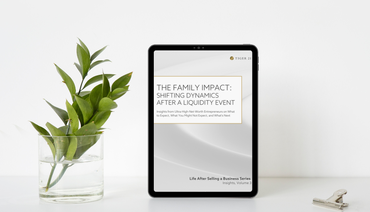ENTREPRENEURIAL SUCCESS: HOW TO AVOID SHINY OBJECT SYNDROME

Back when I was running Jer’s Chocolates, a gourmet chocolate business, I was approached about taking my company into the wedding market. Up until that point, Jer’s Chocolates was distributed exclusively through specialty premium retail stores and business was going well.
But I saw dollar signs. Weddings? It was an exciting thought. Immediately, my brain started churning: Weddings are big business in this country, an industry with huge profits and enormous brand awareness opportunity. After all, most weddings host at least 100 guests, many of whom would no doubt be soon getting married themselves or hosting a wedding for a family member. I envisioned all of these mouths watering for more of our chocolates once they tasted them at these beautiful events. We’d soon be at everyone’s wedding and leveraging this big-budget industry with big-budget and brand-building profits. Surely this would produce fast revenue, right? Wrong. The wedding industry proved to be “a whole different animal” than our core market.
I, an entrepreneurial CEO, had fallen victim to “shiny object syndrome” or “SOS,” as I like to call it, which befalls practically every entrepreneur. I define it as the moment when an opportunity comes along that seems so easy, so “obvious” and so juicy that you almost cannot resist it. Entrepreneurs beware.
We never imagined or thought about, the difference in resources and processes required to be successful. As a result of the industry change, we needed to put in the time to do research on the front-end. We spent hours speaking to brides, grooms, and parents. That was challenging enough.
The amount of labor spent on the package, artwork, and final product was unexpectedly time-consuming as were the minimum order quantity negotiations with our vendors. A central issue was that we had to customize each order — brides expect their wedding day to be perfect. In the end, we earned less profit than anticipated and planned for because we pulled a team away from our core offering — the specialty retail market — and spent way more time on customer service challenges than we had anticipated.
When shiny objects arrive, it’s flattering. These opportunities are a sign of success. People are seeking out your company, product, or service without you even looking for them! And after you’ve poured your heart into building your core business, taking all the chances an entrepreneur takes, and creating a product, idea, or service that is succeeding, it’s tempting to reach for that new distribution channel or that customer outside of your core target. It’s tempting to jump on board with an exposure opportunity, an answer to a competitor’s new product, service, or feature; or a “deal” on a supply or business.
These shiny objects promise the possibility of increasing revenue or adding a new profit stream. However, before you jump, ask yourself, “What are the consequences to your core business if you chase these shiny objects?”
Common Consequences:
Unclear Mission: Shiny objects take you away from your core focus – the reason you created your business. They shift your already taxed mind to something less critical – distracting you from the most important and impactful activities for your business.
Confusion Regarding Priorities: Your team begins to wonder, “What is the priority? Are we sticking with the current initiative or the new one?”
Undue Burden On Your Workforce: When a shiny object captures your imagination, it adds burden to an already taxed team –the same group of people is now being spread even thinner.
Shrinking Profit: Your revenues, profits, and/or productivity actually shrink. If you’re adding to your business, who’s going to oversee it? When people get too busy, something has to give, and it may be your core business. “When you try to be everything to everybody, you end up being nothing to nobody.” This well-worn phrase quite aptly applies to entrepreneurs who often use their ample enthusiasm to spread themselves, their teams, and the company too thin. The result? Their product or service is “nothing to nobody. ”
Sometimes, of course, a pivot is needed, but that pivot needs to be strategic, not a knee-jerk response to a shiny object. Like any business decision, it should be carefully considered and well-vetted before it becomes a company initiative. So how do you avoid the frequent waste of time, energy, and money that comes with chasing a shiny new object? Follow these tips and you should be able to avoid SOS when it comes your way:
Stay on the Path to Success
Vet the Shiny Object: What is the revenue impact of this new idea? What are the costs involved? What is the impact on the team? What is the impact on the operation and your suppliers? Does it fit your core business? Will it have a positive impact on your current customers? These questions will help you avoid going down a rabbit hole and veering too far off course.
Define Potential Negative Consequences: If you pursue the new idea, what will you give up? What attention and resources will you compromise? Will you still reach the goals you’ve set for yourself and your business?
Involve Your Team and Hold Yourself Accountable: Seek honest feedback from your team and make them part of the decision. What are their concerns? And finally, identify metrics that will allow you to check yourself along the way so you can backtrack if you need to-and avoid future mistakes.
If you evaluate your decision carefully, you can avoid the tempting distractions of SOS. Instead, you’ll stay focused and know when to “jump” at real growth opportunities.
Jerry Swain, San Diego TIGER 21 Chair, is a successful entrepreneur and CEO, having founded and built an international award-winning chocolate brand and business before selling 12 years later. He is also Partner at CEO Coaching International, and has a passion for people and enjoys building businesses and teams, problem-solving and giving back to his community.
About TIGER 21
TIGER 21 is an exclusive global community of ultra-high-net-worth entrepreneurs, investors, and executives.
Explore the TIGER 21 Member ExperienceMember Insight Reports










